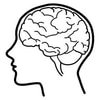Learn about EMDR
EMDR (Eye Movement Desensitization and Reprocessing) therapy is a highly effective and evidence-based approach used to treat trauma and various other mental health challenges. During EMDR sessions, clients recall distressing memories while simultaneously following the therapist's bilateral eye movements or other forms of bilateral stimulation. This process helps reprocess traumatic memories, reducing their emotional intensity and facilitating healing. EMDR can lead to significant symptom reduction, improved emotional well-being, and a sense of empowerment and resilience in clients.
How can EMDR help people with Eating Disorders?
EMDR (Eye Movement Desensitization and Reprocessing) therapy can be a valuable and effective treatment approach for individuals dealing with eating disorders. While EMDR is not a stand-alone treatment for eating disorders, it can complement traditional therapies and enhance overall recovery.
Here's how EMDR therapy can help with eating disorders:
Addressing Underlying Trauma
EMDR therapy is particularly helpful for individuals whose eating disorders are rooted in past traumatic experiences. Trauma, such as abuse, neglect, or significant life events, can contribute to the development and maintenance of eating disorders. EMDR helps process and reframe traumatic memories, reducing their emotional impact and decreasing their influence on disordered eating behaviors.
Reducing Triggers and Emotional Distress
Eating disorders often involve intense emotional distress and overwhelming triggers. EMDR can help identify and process these triggers, reducing their emotional charge and enabling healthier responses to stress and emotions. By addressing these triggers, individuals may experience a decrease in maladaptive coping mechanisms, such as binge eating or purging.
Addressing Negative Beliefs and Body Image
EMDR therapy can be beneficial in challenging negative beliefs related to body image and self-worth. Individuals with eating disorders may hold distorted beliefs about their bodies, leading to dissatisfaction and self-criticism. EMDR helps reprocess negative beliefs, fostering a more positive body image and self-acceptance.
Enhancing Coping Skills
EMDR therapy helps individuals develop effective coping skills to manage emotions and stressors. This newfound resilience can lead to a reduction in disordered eating behaviors and an improved ability to handle challenging situations.
Fostering Emotional Regulation: Eating disorders often involve difficulties in regulating emotions. EMDR can help individuals build emotional regulation skills, providing healthier alternatives to using food as a coping mechanism.

